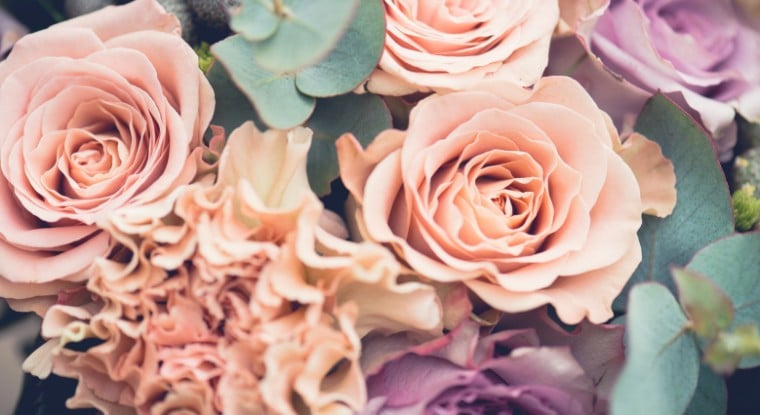When planning a wedding, one of the key decisions you’ll make is how many flowers you need. This can be a tricky question to answer, as there are so many variables to consider. The size of your venue, the number of guests, the time of year, and your style all influence how many blooms you’ll need to create your perfect day. We’ve put together a handy guide to help you figure out how many flowers you need for your wedding. We’ll walk you through all the factors you need to consider and give you some helpful tips on ensuring you have enough (or only a few) flowers for your big day.
When planning a wedding, you might wonder how many flowers you’ll need. It’s a good question; the answer will depend on a few factors. First, think about the size of your venue. If you’re having a large wedding with hundreds of guests, you’ll need more flowers than if you’re having a smaller, intimate affair. Second, consider the type of flowers you want to use. If you’re using lots of large arrangements, you’ll need fewer stems than those using lots of small bouquets. Third, think about your budget. Flowers can be one of the most expensive parts of a wedding, so if money is tight, you might need to scale back on the number of blooms. Ultimately, there’s no right or wrong answer regarding how many flowers to have at your wedding. It’s up to you to decide what looks best for your event!
How Many Flowers Should Be in a Centerpiece?
When deciding how many flowers should be in a centerpiece, there are a few things to remember. The size of the table, the height of the arrangement, and the overall look you are going for will all play a role in how many blooms you ultimately use. As a general rule of thumb, shorter tables or those with lower ceilings will require fewer flowers, while taller tables or those with higher ceilings can accommodate more.
You’ll also want to ensure that your arrangement looks balanced and proportionate – too many flowers can start to look overwhelming, while too few can appear sparse. A good starting point is usually somewhere between 10-15 stems. You can add or remove blooms from there until you get the desired look. Remember that larger-headed varieties like roses will take up more space than smaller blossoms like baby’s breath, so you may need to adjust accordingly. And finally, remember the greenery! Filler leaves and branches can help give your arrangement some extra fullness and texture.
How Many Flowers Go in a Wedding Bouquet?
If you’re planning a wedding, you might wonder how many flowers go in a bouquet. The answer depends on your bouquet size and the type of flowers you choose. A small bouquet might have just a few Flowers, while a large one could have dozens. The most popular flowers for wedding bouquets are roses, lilies, and carnations. You can also use baby’s breath, greenery, or other filler Flowers to add fullness to your arrangement.
There is no right or wrong answer when deciding how many Flowers to include in your wedding bouquet. It all depends on your personal preference and the overall look you’re going for. If you need help figuring out where to start, consult a florist or ask a friend with experience arranging flowers. They’ll be able to help you choose the perfect blooms for your big day!
How Many Days before Wedding Can You Do Flowers?
If you’re looking to DIY your wedding flowers, you’ll want to start them at least a week before the big day. This will give you time to condition the flowers and ensure they look their best. If you’re working with a florist, they will deliver the flowers a day or two before the wedding.
HOW TO DO FLOWERS FOR A WEDDING/EVENT
How to Calculate How Many Flowers for a Wedding?
When planning your wedding, choosing the right number of flowers for the big day is important. But how do you know how many flowers to order? Here’s a guide to help you calculate the number of blooms you’ll need for your wedding:
1. Start with the guest count. The first thing you need to know is how many people will be attending your wedding. This will give you a good starting point for calculating the number of flowers required.
2. Choose your flower types. Decide which flowers you want to use in your bouquets, centerpieces, and other arrangements. This will help determine how many stems or bunches you need to order. Commonly used wedding flowers include roses, lilies, daisies, and baby’s breath.
3. Consider the size of your venue and tables. Consider the size of your reception space when deciding the size and number of floral arrangements needed. Also, consider whether you’ll have large or small tables at your reception—this affects both table centerpiece choices and how many bouquets will be needed.
4. Determine how elaborate your designs will be. Will your floral arrangements be simple or more complex? The more detailed the design, the more stems will be needed if you need more clarification, ask your florist for an estimate based on what they envision for your wedding day.
5. Don’t forget boutonnieres and corsages ! In addition to bouquets and centerpieces, remember that you may also need boutonnieres for the groom & his groomsmen, as well as corsages for mothers & grandmothers. These can usually be made with fewer stems than larger arrangements, but it’s still important to factor them into your overall floral budget.
6. Make a list (or spreadsheet). Once you have all these factors considered, it’s time to make a list (or spreadsheet) detailing each type of flower & how many are needed per item. For example, 20 bridal bouquets @ two dozen roses each = 40 dozen roses total; 10 mother’s corsages @ three carnations each = 30 carnations total, etc… This ensures that no detail is forgotten & gives both yourself &your florist a clear idea of exactly what is required on The Big Day!
Ending
When it comes to wedding flowers, there is yet to be a definitive answer for how many you will need. It largely depends on the size and scale of your event and your personal preferences. However, a few key considerations can help you determine a ballpark estimate for your nuptials.
To start, consider the size of your guest list and wedding party. A good rule of thumb is to have one large bouquet for every five guests. So, if you expect 100 guests, you will need 20 bouquets total. Next, consider the type of flowers you want and their availability. Some blooms may be out of season or difficult to find in your area, which could drive up the cost significantly. If your heart is set on a specific variety, be prepared to pay more or compromise with a similar alternative. Finally, factor in other uses for flowers throughout the day, such as centerpieces, boutonnieres, corsages, and ceremony décor. Once you have an idea of all the places where flowers will be needed, you can start to get a better sense of how many arrangements will be required overall.




